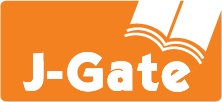Abstract
Organizational commitment is one of the most researched areas in behavioral studies. As commitment to an organization is the backbone for any effectively functioning organization, commitment has received a very special attention by practitioners in an organization. Age, organization tenure and gender are antecedents to organizational commitment. This paper studies commitment with relation to gender, age and organization tenure among private school teachers in Lucknow, India. The study also looks into the interaction effect of gender with age and organizational tenure in understanding commitment. Analysis of data is conducted with statistical tools like independent t test, one way ANOVA and two ways ANOVA. The results show that there is no significant difference among gender, age groups and grouping by tenure with regard to commitment scores. But both the interaction effects are significant. Results are elaborated upon in the discussion section. Limitations, managerial implications and future research areas are also discussed. The concept of organizational commitment has matured and finds acceptability and adoration in the literature on industrial and organizational psychology (Cohen, 2003).Organizational behaviour in the workplace has been greatly linked to organizational commitment in many researches. (Porter et al., 1974). Among all forms of commitment, organizational commitment 'is currently enjoying widespread popularity' (Griffin and Bateman, 1986, p. 166). Though individuals can be committed to an array of foci (Meyer&Herscovitch, 2001; Reichers, 1985), like occupations (Meyer et al., 1993),unions (Fullagar, Gallagher, Clark,&Carroll, 2004), career (Blau, 1985a) organizational commitment is the most evolved of all constructs (Morrow&McElroy, 1986).
Keywords
Organizational Commitment, Organization Tenure, Gender, Age, Interaction Effect
Recommended Citation
Yadav, Lalit Kumar
(2016)
"Demographic Characteristics & Organizational Commitment:Studying Interaction Effect among School Teachers,"
Management Dynamics: Vol. 16:
No.
1, Article 5: 72-84
DOI: https://doi.org/10.57198/2583-4932.1076
Available at:
https://managementdynamics.researchcommons.org/journal/vol16/iss1/5





